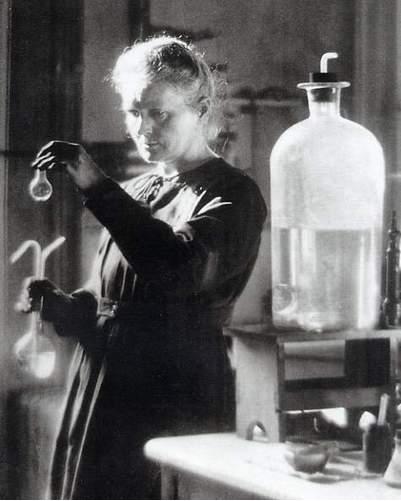
Curie toured the country, and there was much fanfare and publicity associated with her visit. In 1921, Curie visited the United States, along with her two daughters, to receive her gift of radium. Several committee members went on to become AAUW presidents. Many prominent leaders loomed large in the group: Virginia Gildersleeve, Ada Comstock, Aurelia Reinhardt, Marion Park, Mary Woolley, and Meta Glass. Within the ACA, the International Federation of University Women American Committee took on the project. The Association of Collegiate Alumnae was an active participant in this effort. Meloney organized a group of women in the United States and formed the Marie Curie Radium Fund. Meloney left the interview determined to make Curie’s wish come true. Meloney asked, “If you had the whole world to choose from, what would you take?” Curie replied, “I need a gram of radium to continue my research, but I cannot buy it radium is too dear for me.” During their discussion, the scientist stated she was in short supply of radium, an element that she had discovered. ‘Radium is an element, it belongs to the people.When Marie Curie Needed Radium, We Obliged March 15, 2013ĭid you know that in 1920, the Association of Collegiate Alumnae (the predecessor to AAUW) helped raise money to purchase a gram of radium for Marie Curie? It was an effort led by Marie Meloney, a journalist and editor of The Delineator women’s magazine. ‘Radium was not to enrich anyone,’ she told Meloney. She never regretted sharing her discoveries with the world. Marie might not have made her fortune, but she became a pioneer in the openness of science. The key unlocked a lead-lined cabinet containing a single gram of her precious material. She was taken on a whirlwind tour of the US and soon found herself at the White House being presented with a small golden key by the president. Crowds of people flocked to see her and show their admiration. Before too long the money was found and Marie was on a boat to America. Marie had been left unable to carry on her work, incapable of purchasing the smallest amount of her element.īut the American public warmed to Marie – for her dedication to science her quest for knowledge and her unstoppable resolve in the face of sexism.


Radium is too dear for me.’ In the years since its isolation, the price of a single gram of radium had risen to $100,000.

The radium phenomenon had changed the world, but the style of Marie’s life had changed very little until a chance question during an interview with the leading US journalist Marie Mattingly Meloney: ‘If you had the whole world to choose from, what would you take?’ Her dream sounded simple: ‘I need a gram of radium to continue my researches, but I cannot buy it. They had unleashed radium onto the world and it was for the world to play, test and explore this new toy like a curious child. If a single patent had been taken out, the process would have been theirs to sell, but this wasn’t the Curie way. There were true applications of radium, however, and by the 1920s radiotherapy was taking its first tentative steps. It is lucky for many that a lot of these products were snake oil, the vendors lacking the skill, money or determination to isolate radium. In the years following the discovery, people around the world were eating, drinking and even wearing radium. Radium tonics would restore your hair (ironically, ingesting radium can cause hair loss) radium in your toothpaste would whiten your teeth (it wouldn’t) and radium tablets to increase your sexual vigour could be followed by radium contraceptives. As Marie and Pierre had shared not only their discovery but their method, there was a radium boom.

With its faint green glow, radium was an object of fascination. Marie and her husband Pierre had put themselves, albeit unwittingly, in harm’s way to isolate it even today their papers are still too radioactive to be handled safely. Radium had been painstakingly isolated in 1902 from over a ton of pitchblende. How extraordinary then, that by 1921, Marie was left unable to afford even a single gram of an element she had discovered and named. She fought her way to be the first female professor at the University of Paris she was the first woman to win a Nobel prize and the only person ever to win two Nobel prizes in different sciences. As a woman, she faced idiotic prejudices at every turn but always battled on. Marie Curie is one of the most extraordinary characters from the history of science.


 0 kommentar(er)
0 kommentar(er)
